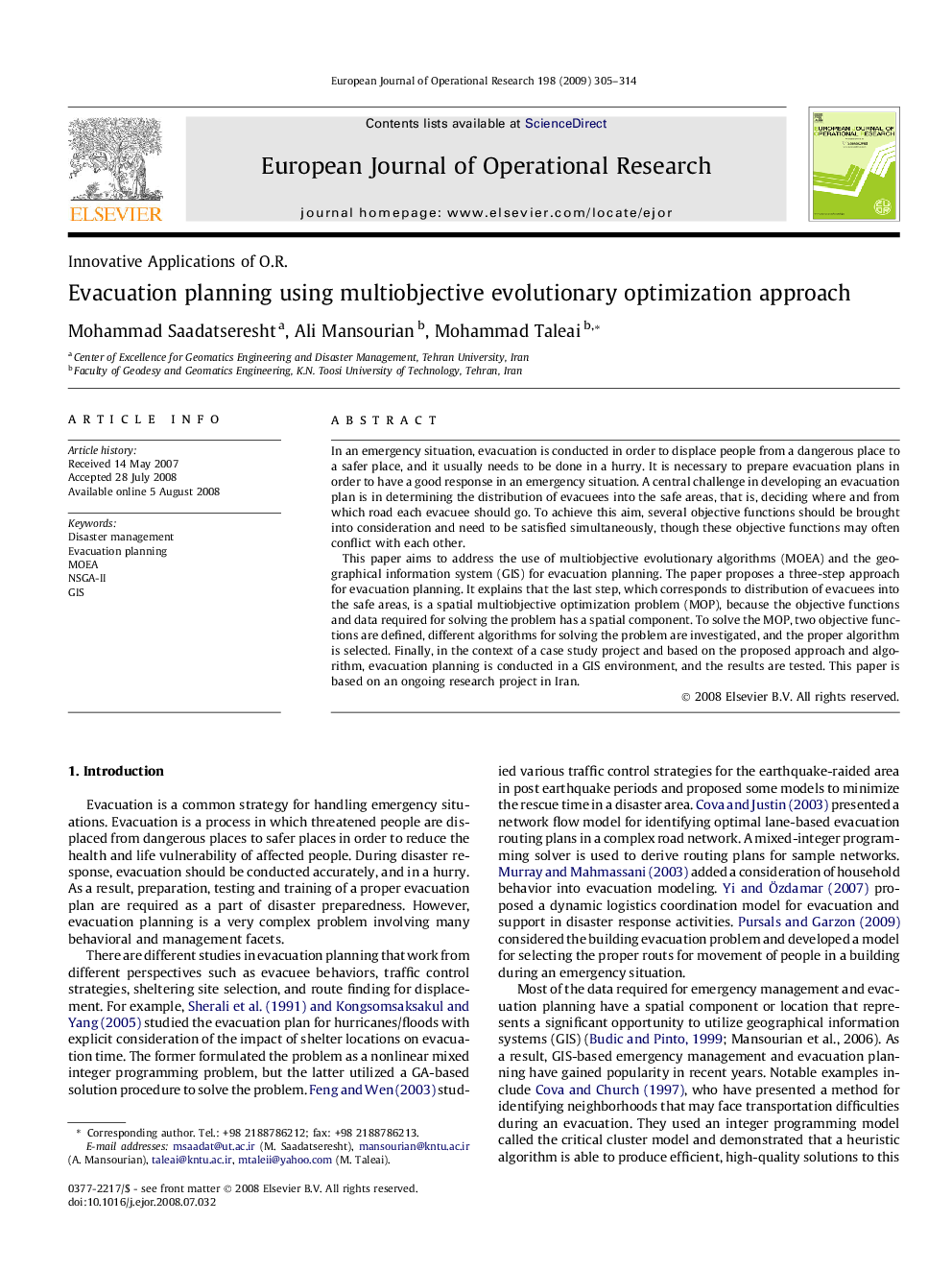| Article ID | Journal | Published Year | Pages | File Type |
|---|---|---|---|---|
| 482532 | European Journal of Operational Research | 2009 | 10 Pages |
In an emergency situation, evacuation is conducted in order to displace people from a dangerous place to a safer place, and it usually needs to be done in a hurry. It is necessary to prepare evacuation plans in order to have a good response in an emergency situation. A central challenge in developing an evacuation plan is in determining the distribution of evacuees into the safe areas, that is, deciding where and from which road each evacuee should go. To achieve this aim, several objective functions should be brought into consideration and need to be satisfied simultaneously, though these objective functions may often conflict with each other.This paper aims to address the use of multiobjective evolutionary algorithms (MOEA) and the geographical information system (GIS) for evacuation planning. The paper proposes a three-step approach for evacuation planning. It explains that the last step, which corresponds to distribution of evacuees into the safe areas, is a spatial multiobjective optimization problem (MOP), because the objective functions and data required for solving the problem has a spatial component. To solve the MOP, two objective functions are defined, different algorithms for solving the problem are investigated, and the proper algorithm is selected. Finally, in the context of a case study project and based on the proposed approach and algorithm, evacuation planning is conducted in a GIS environment, and the results are tested. This paper is based on an ongoing research project in Iran.
